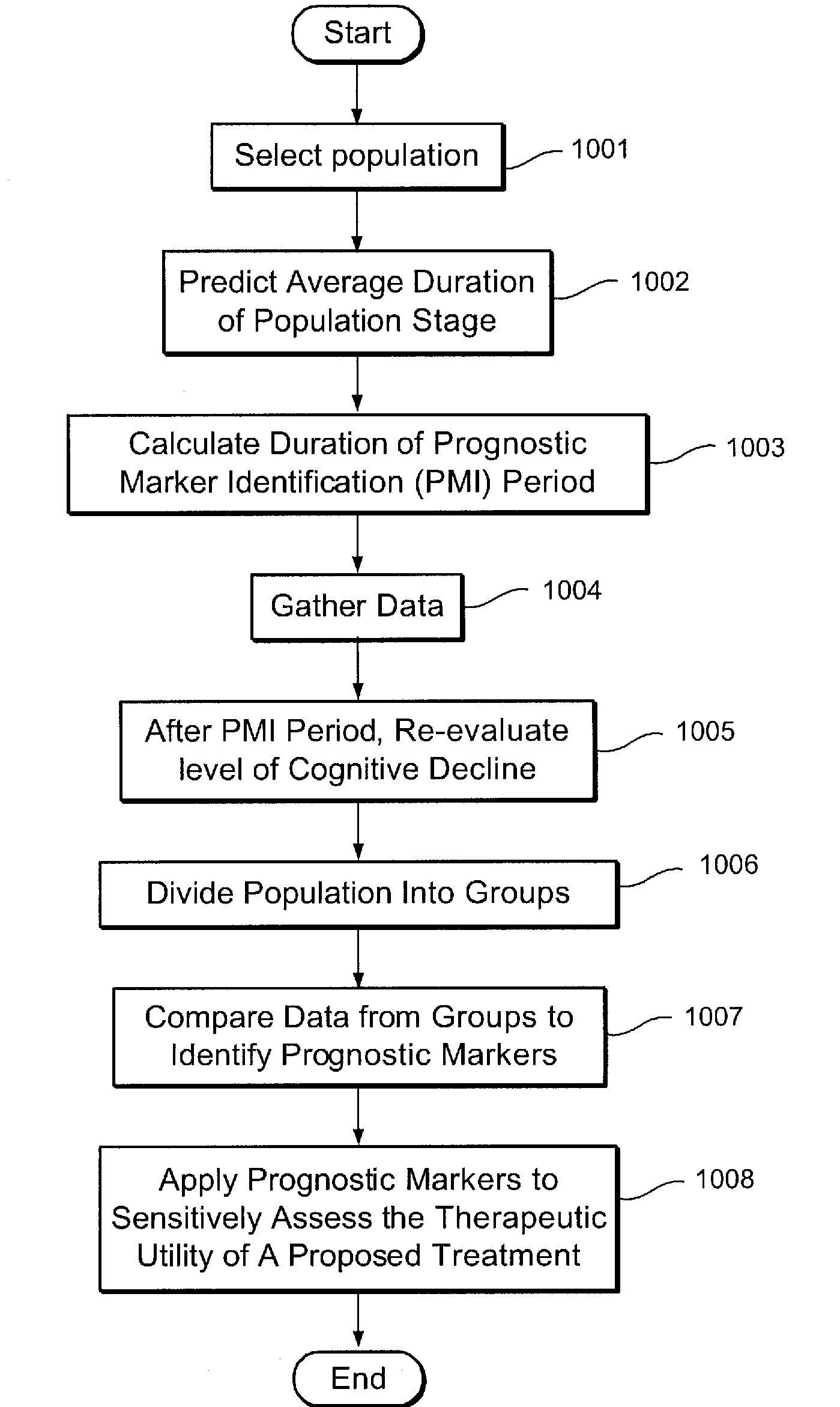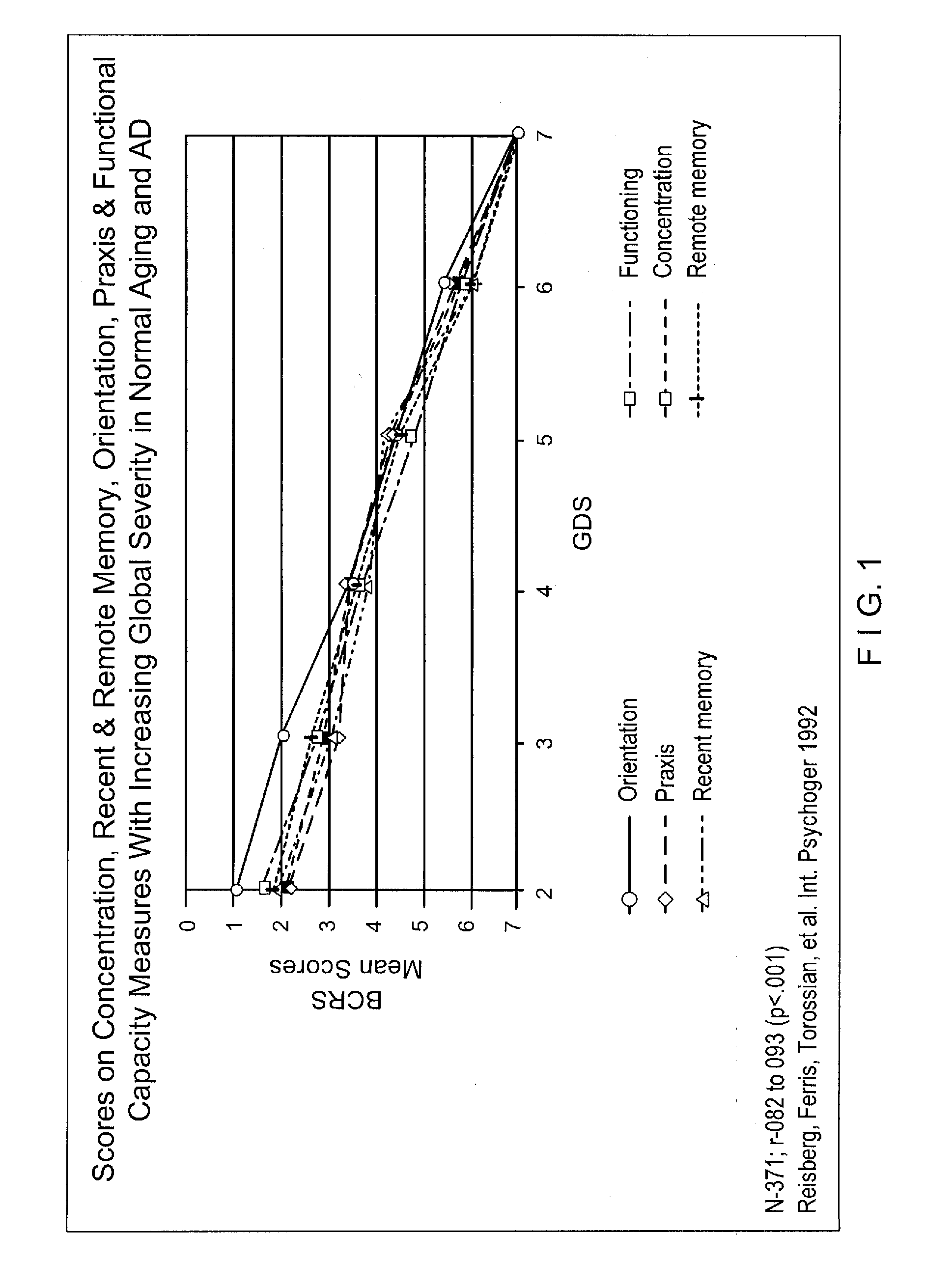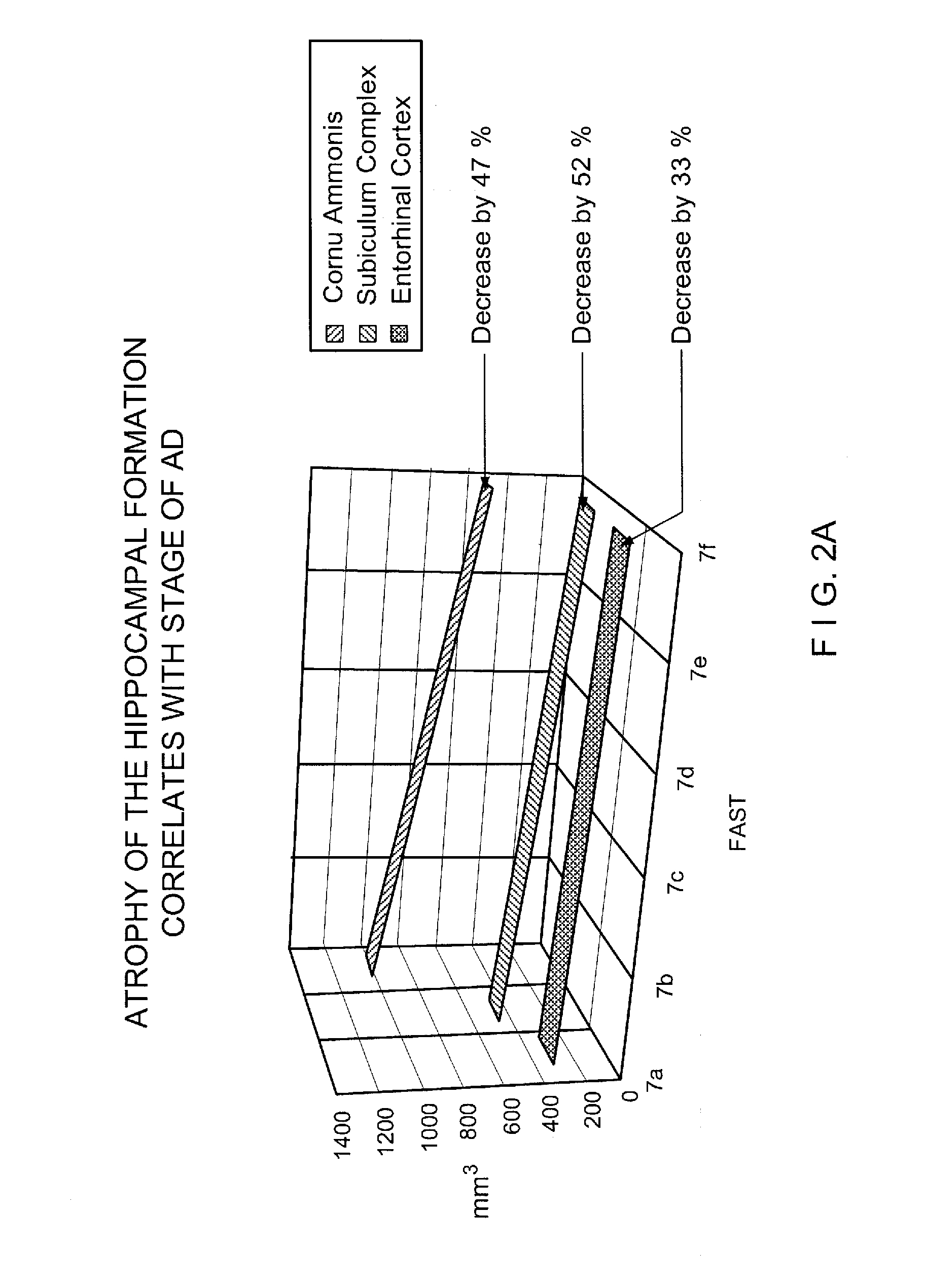Stage Specific Prognostic In Vivo Markers of Brain Aging and Dementia
a stage specific and in vivo technology, applied in the field of stage specific prognostic in vivo markers of brain aging and dementia, can solve the problems of limited success of available methods for staging cognitive disorders and predicting the rate of future declin
- Summary
- Abstract
- Description
- Claims
- Application Information
AI Technical Summary
Benefits of technology
Problems solved by technology
Method used
Image
Examples
Embodiment Construction
[0017]The present invention may be further understood with reference to the following description and the appended drawings. An exemplary embodiment of the present invention is directed to a system and method for identifying stage specific treatments and preventative agents for brain aging with no cognitive impairment (“NCI”), Subjective Cognitive Impairment (“SCI”), Mild Cognitive Impairment (“MCI”), Alzheimer's Disease (“AD”) and other degenerative dementias.
Stages of Brain Aging and Alzheimer's Disease
[0018]Conventional GDS techniques are used to summarize whether an individual has cognitive impairments consistent with a degenerative dementia such as AD. The GDS system categorizes exhibited symptoms into one of seven global stages. The seven stages range from stage 1, wherein a patient exhibits no subjective memory deficit to stage 7, wherein a patient may have lost all basic psychomotor skills and verbal abilities and will exhibit incontinence. Stages 2-6 are indicative of the r...
PUM
 Login to View More
Login to View More Abstract
Description
Claims
Application Information
 Login to View More
Login to View More - R&D
- Intellectual Property
- Life Sciences
- Materials
- Tech Scout
- Unparalleled Data Quality
- Higher Quality Content
- 60% Fewer Hallucinations
Browse by: Latest US Patents, China's latest patents, Technical Efficacy Thesaurus, Application Domain, Technology Topic, Popular Technical Reports.
© 2025 PatSnap. All rights reserved.Legal|Privacy policy|Modern Slavery Act Transparency Statement|Sitemap|About US| Contact US: help@patsnap.com



